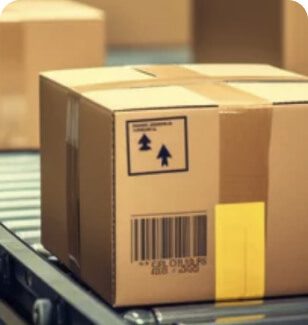A Year in Review: 2018 Ecommerce Technology Trends That Reshaped The Industry
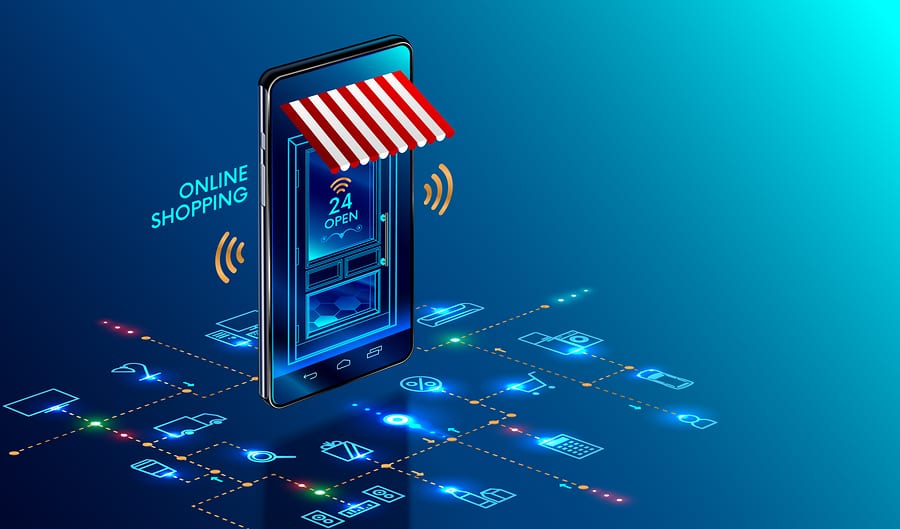
The ecommerce industry has shifted rapidly in recent years. Just when you think you’ve gotten ahold of the stats and trends, they change and you’re left rushing to keep up. Don’t worry – this is true for all of us.
Luckily, we’re here to help you wrap your mind around 2018 ecommerce technology trends that reshaped the industry, as we look ahead to another record-setting year in 2019.
Let’s dive in.
Ecommerce Technology Trends That Shaped 2018
We’ve already done a deep dive into ecommerce technology trends in 2017, but what did they look like for 2018 and how will these trends play out in 2019 and beyond?
Here’s a rundown:
Global Ecommerce Grew Rapidly
Few other parts of the digital world are grew at the rate of global ecommerce in 2018. According to Statista, global ecommerce reached $2.5 trillion in 2018 and will skyrocket to $4.5 trillion by 2021. Today, ecommerce represents nearly 10% of all retail sales in the US, and that figure is climbing by about 15% annually.
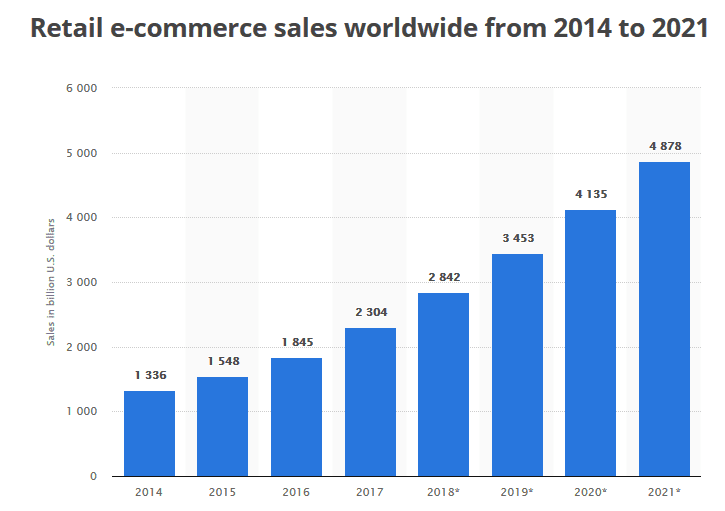
These trends go to show that ecommerce is booming right now and that it will continue to explode in coming years. This means marketers who want to take advantage of trends will do well to climb aboard now and ride the trends as they emerge.
While global shopping rates are healthy, it’s important to not overlook cart abandonment rates, either. As of 2014, consumers left over $4 trillion in shopping carts. By device, the cart abandonment statistics show that desktop has a 61% abandonment rate, tablets have a 71% abandonment rate and mobile has an 81% abandonment rate.
As 2018 comes to a conclusion, newer cart abandonment facts are spawning a trend in prevention tools are taking center stage. Services like Drip, which helps you send a cart abandonment email, are becoming immensely popular. Additionally, a variety of new apps are being being introduced to shopping cart services like Shopify, BigCommerce and 3dcart, that help reduce abandonment with features like: live chat, integrate product reviews, price match pledges, promo codes and coupon codes, and more. All told, some of these tools can reduce abandonment rates by as much as 33%.
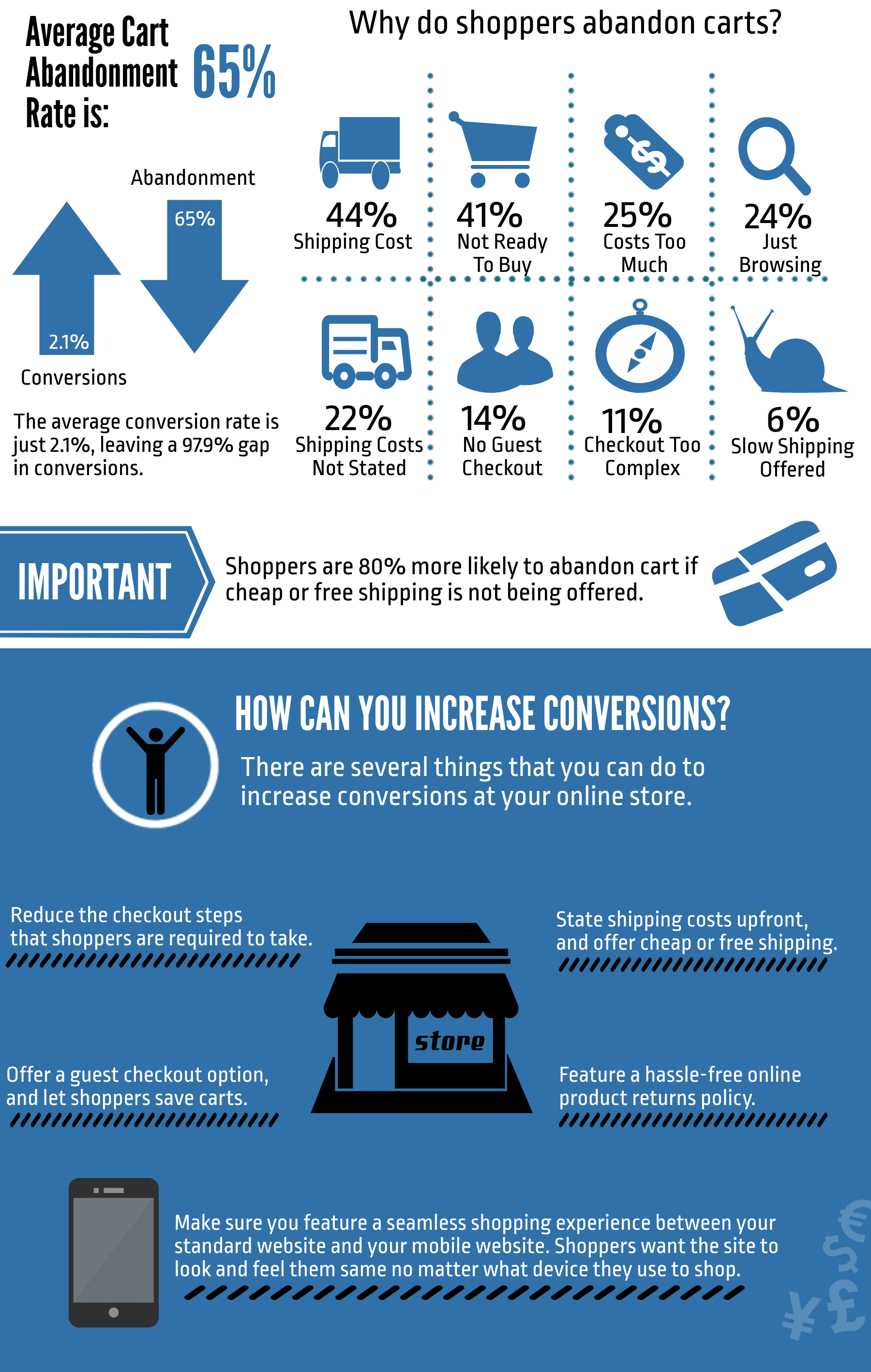
Smartphone & Social: An Emerging Trend
Today, about 11% of online shoppers are using their smartphones to browse items on a weekly basis, but that number is projected to grow.
As of the end of 2018, about 35% of consumers report that they plan to use smartphones as their primary purchasing tool in the coming years. This trend is primarily impacted by social media and the digital world, with 39% of shoppers reporting that they get inspiration for purchasing decisions either through influencers or from their own social circles.
While this turn toward mobile isn’t new, it is one of the primary reasons many ecommerce stores are taking an aggressive mobile optimization approach. When shopping on a mobile phone is easy, consumers are more likely to do it with your store. If you’re online store doesn’t yet have a mobile presence, there’s never been a better time to get on this gravy train.
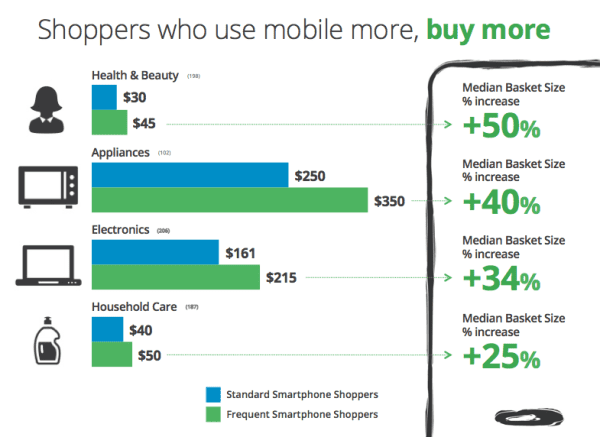
Video is The New Standard
Video is making a big splash in ecommerce this year, with animate at the forefront. While animation might be something you’re more familiar with in the context of video games or graphic design, it’s making strides in the world of ecommerce.
Video set new standards in 2018, a trend that will follow well and beyond. Animation in particular serves a unique purpose in ecommerce. By using motion to create a sense of urgency or delight, animation can help brands express themselves, grab user attention, and communicate essential notifications, like the fact that an item is almost sold out, or that something is new to the store (Hint-hint: you probably watched the animated video we created for this blog.)
If you’re interested in using animation for our ecommerce setting, remember that subtle is better than in-your-face. While the former is enticing, the latter is annoying. Whether you’re using animated or traditional video marketing for your ecommerce store, it’s going to be at the forefront of technology tools that are being used.
Why video? These stats don’t lie:
- Videos have a 16.85% conversion rate as compared to standard banners (2.14%) and mobile (1.62%). (eMarketer)
- 58% of consumers trust brands with videos more. (Retail Touch Point)
- 59% of consumers will watch a video that is part of your website content. (Reach Engine)
- 96% of shoppers rely on product videos when making a buying decision. (Animoto)
- 6% of shoppers rely on visuals when making a buying decision. (VoucherCloud)
- Consumers who watch a product video are 1.7 times likelier to convert. (Invodo)
- 12% of consumers will watch a video on an ecommerce site. (MediaPost)
- 57% of shoppers will return less and buy in confidence when product videos are offered. (MediaPost)
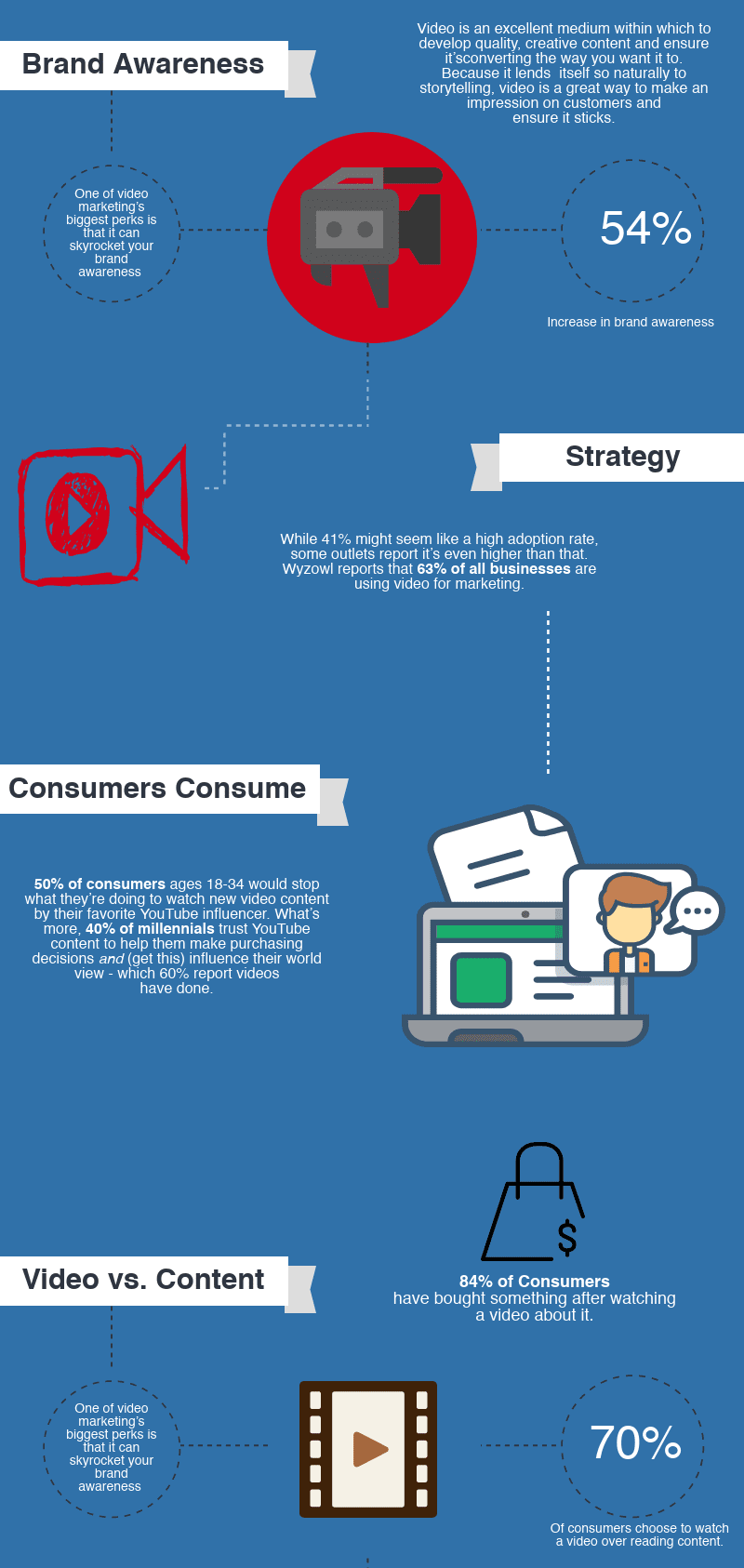
Social Shopping Has Gone Viral
Social shopping has been an emerging trend for a few years, but it’s set to make a significant impact in 2019 and beyond.
Highly visual platforms, like Pinterest and Instagram, allow merchants to bring their products to customers in a very interactive and attractive way. Because of this, social media stands out as the ideal landscape for retailers who want to showcase their products positively, and ensure customers are receiving content via the platforms they frequent.
Thanks to introductions like buyable pins and more streamlined shopping functions, social shopping has become more accessible than ever before – for both shoppers and merchants.
The most recent social commerce statistics are telling. As of 2015, at least 5% of ecommerce purchases were socially referred. Today, that number has climbed to 8%.
By social channel, this equates to:
- 38% of Facebook users
- 22% of Twitter users
- 29% of Pinterest users
With the average potential consumer spending as much as two hours a day on social media, it’s viable outreach mechanism. What’s more, 71% of social users who have a positive experience with your brand will recommend it to another person.
Put into better perspective, in 2015, Facebook influenced 52% of buying decisions, in an offline and online capacity, representing a 36% increase from the year prior. Simply put: social commerce is one of the most powerful tools you can use to reach new customers, a trend that will continue this year and well into the future.
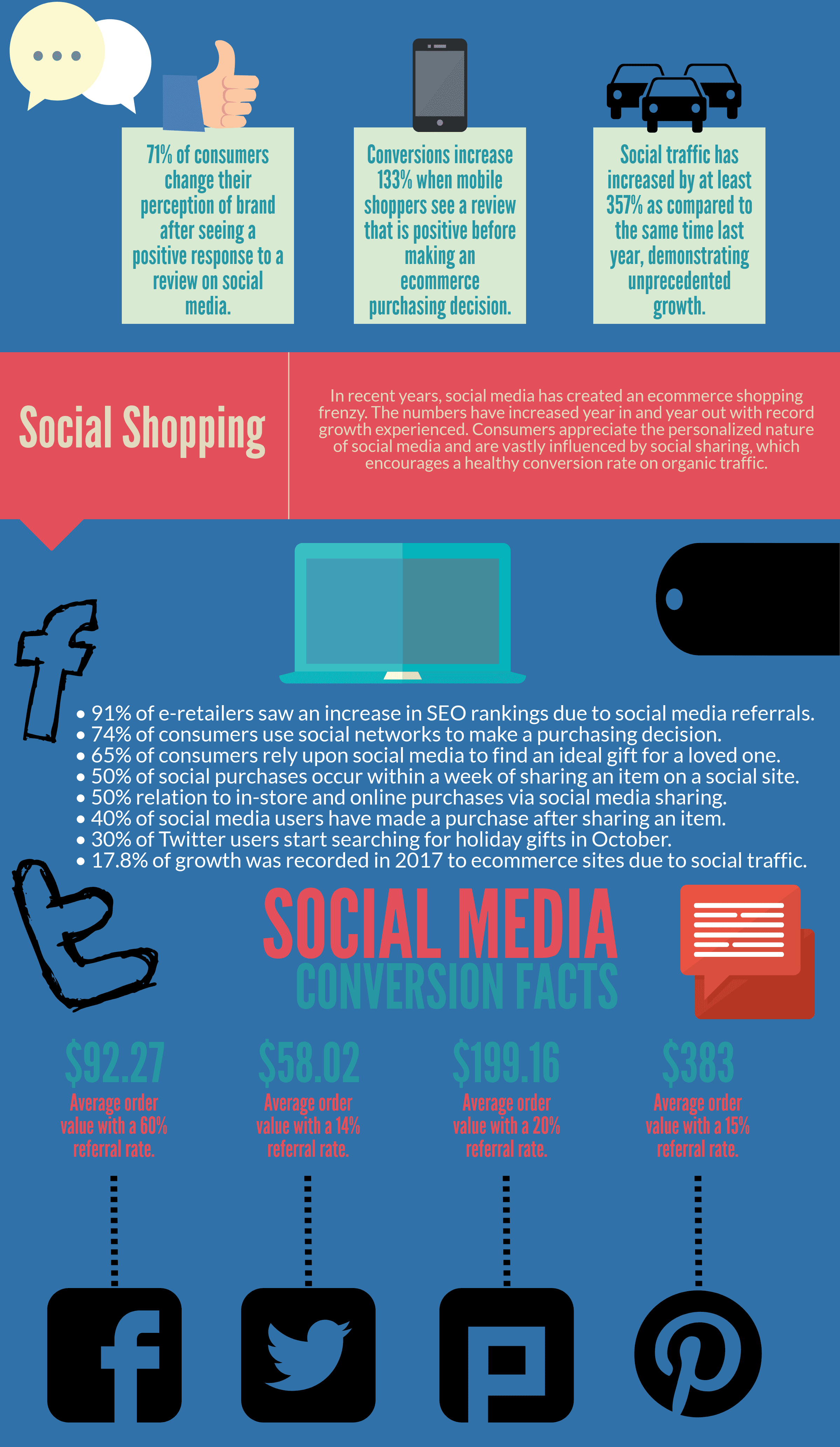
Virtual Shopping is the Future
Augmented and virtual reality devices are getting cheaper and easier to find, and ecommerce is responding in kind. This year, and in the years to come, AR and VR will become part of the packaging, shopping, checkout, and shipping experience for customers, and it stands to make the entire process easier to navigate as well as making it more enjoyable.
Not only that, but AR/VR also stands to increase customer loyalty for the brands that use it, as 70% of buyers currently report that they’d be more loyal to brands that use AR as part of their shopping experience. Finally, machine learning has the potential to save brands time by automating tasks, converting more customers, and making more informed decisions.
Virtual shopping by the numbers:
- 66% of consumers are interested in virtual reality shopping
- 63% of consumers think that virtual reality will forever change online shopping
- 37% of are open to the idea of virtual shopping in the future
- 49% of consumers would use Oculus Rift to virtually shop
- 32% of consumers are considering purchasing a virtual reality device
- 37% of consumers don’t think virtual reality will change their shopping experience
- 35% of consumers think that virtual reality will encourage them to buy more items
- 22% of consumers won’t visit brick and mortar stores as much with virtual shopping
- 19% of consumers are not interested in virtual shopping at all
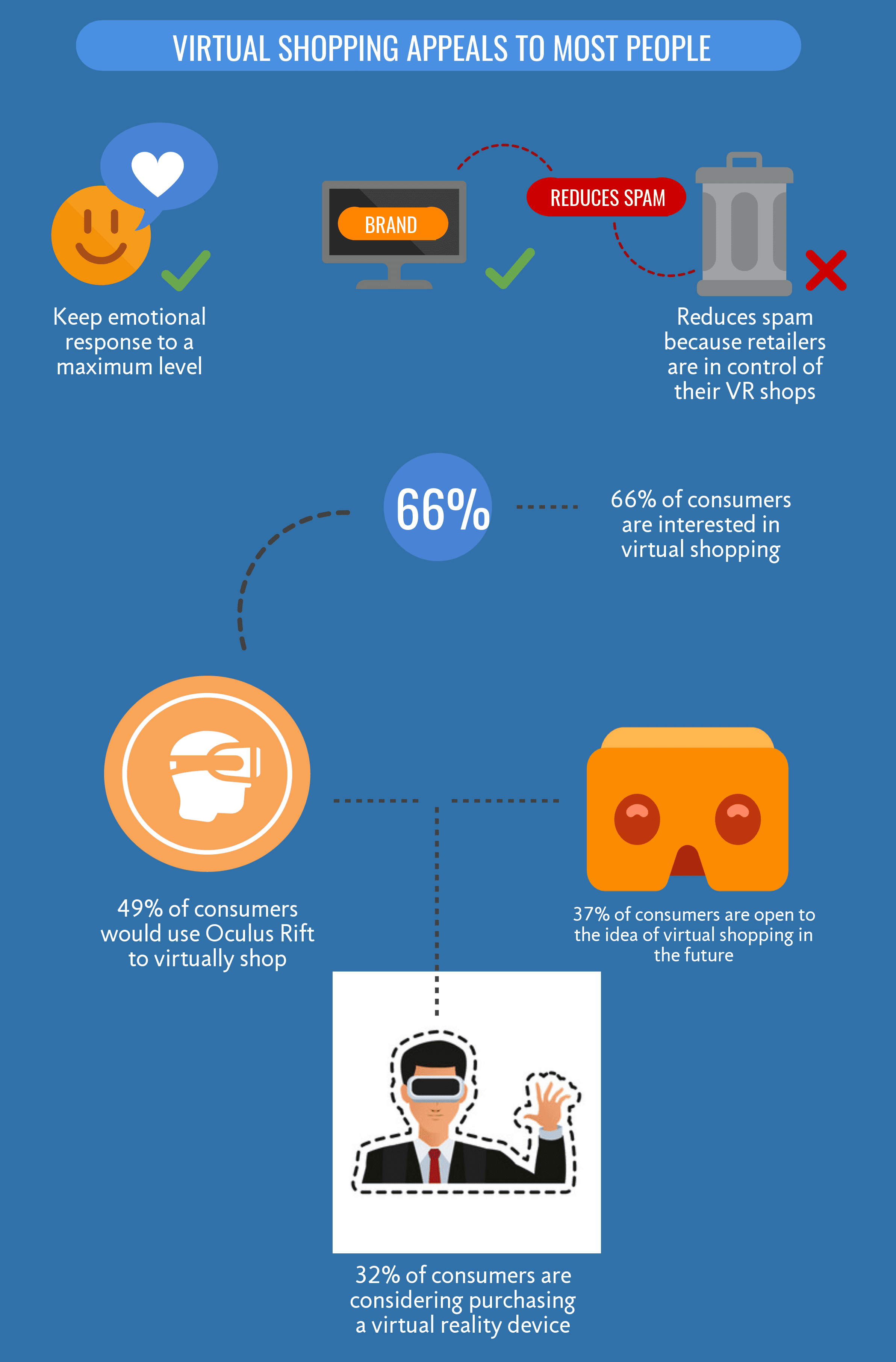
Automation is The Way
For years, ecommerce store owners have fallen victim to manual tasks that take up time and don’t deliver a ton of ROI. Sound familiar? (That’s why we created the ReadyCloud CRM suite, complete with integrated Shipping Software and Returns Software plugins to fully automate your ecommerce store.)
Luckily, automation is here to save the day. Now that ecommerce store owners are increasingly using tactics like social media to drive traffic and sales, automation has emerged as a way for those same merchants to automate critical processes and drive better results.
Automation has also been a welcome shift for consumers – 50% of online shoppers currently prefer using automated messaging apps to connect with businesses over traditional methods. But it doesn’t stop there.
Once again, industry leader, Amazon, is setting the standard with ecommerce automation. Where? In the warehouse! The newest fascination? Amazon Air: a way to get packages delivered to your home via drones in 30 minutes or less.
Of course, automation is nothing new for Amazon, which currently uses robots in its regional fulfillment warehouses to ready an estimated one package per second for delivery. This, in turn, has helped the juggernaut dominate as much as 50% of all online sales.
Expect next year to bring new emphasis to ecommerce automation, with automated and driver-less delivery of packages, same-day delivery options and improved order accuracy.
The Future of Ecommerce Technology
As ecommerce technology continues to adapt, online stores will continue to adapt with it. Through the rise of things like voice search, AR/VR, automation, social shopping and similar platforms, ecommerce marketers have gained access to more streamlined methods of selling and closer customer relationships than ever before.
By taking advantage of these ecommerce technology trends, ecommerce merchants will be able to increase their sales volumes, create better outcomes, and enjoy closer customer relationships – in 2018 and beyond.
Want to say ahead of the curve? Then take a look at these 2018 cross-channel shopping statistics. They’ll help you outsell your competitors from day one in 2019. Happy New Year, from all of us at ReadyCloud to each and every one of you!
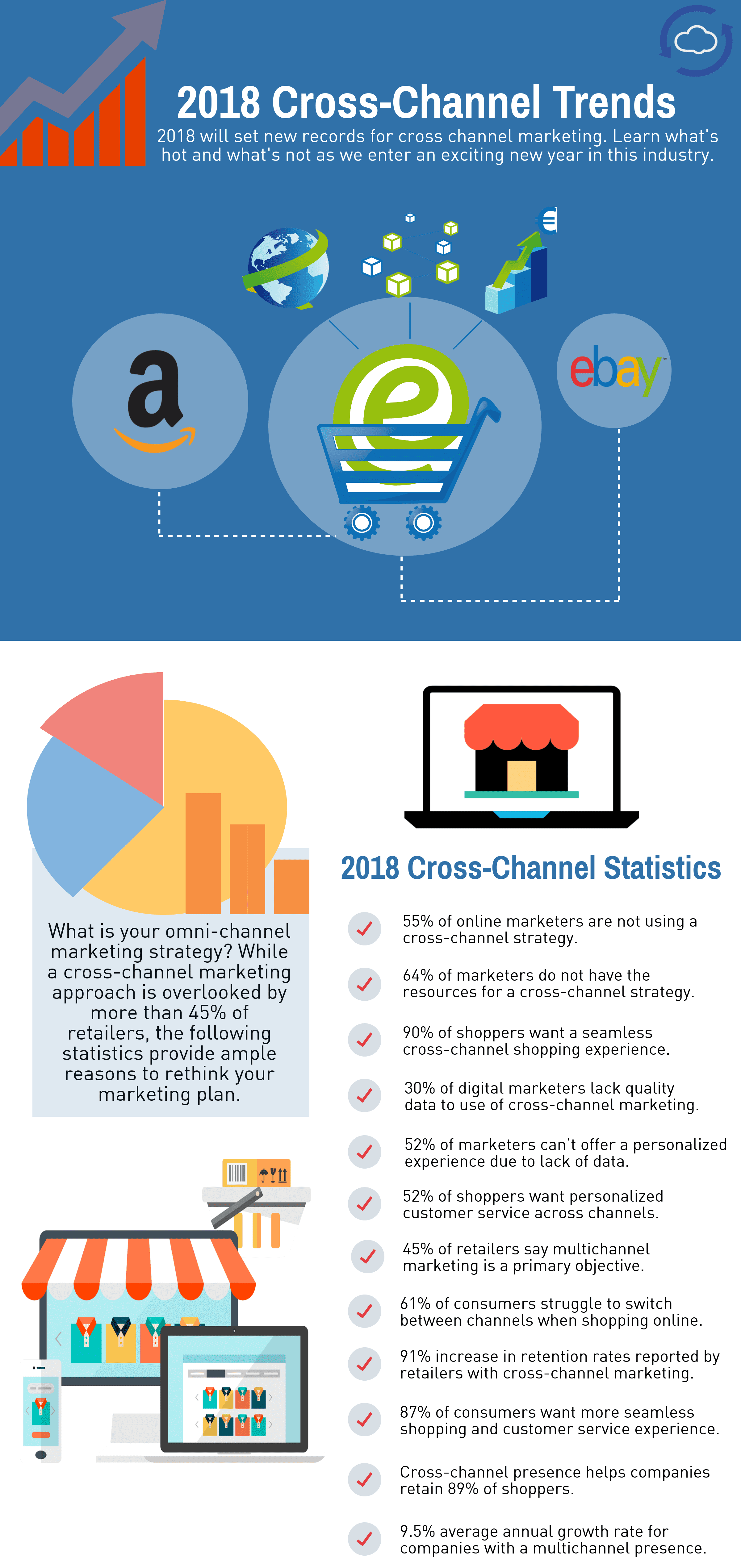
Share On:



